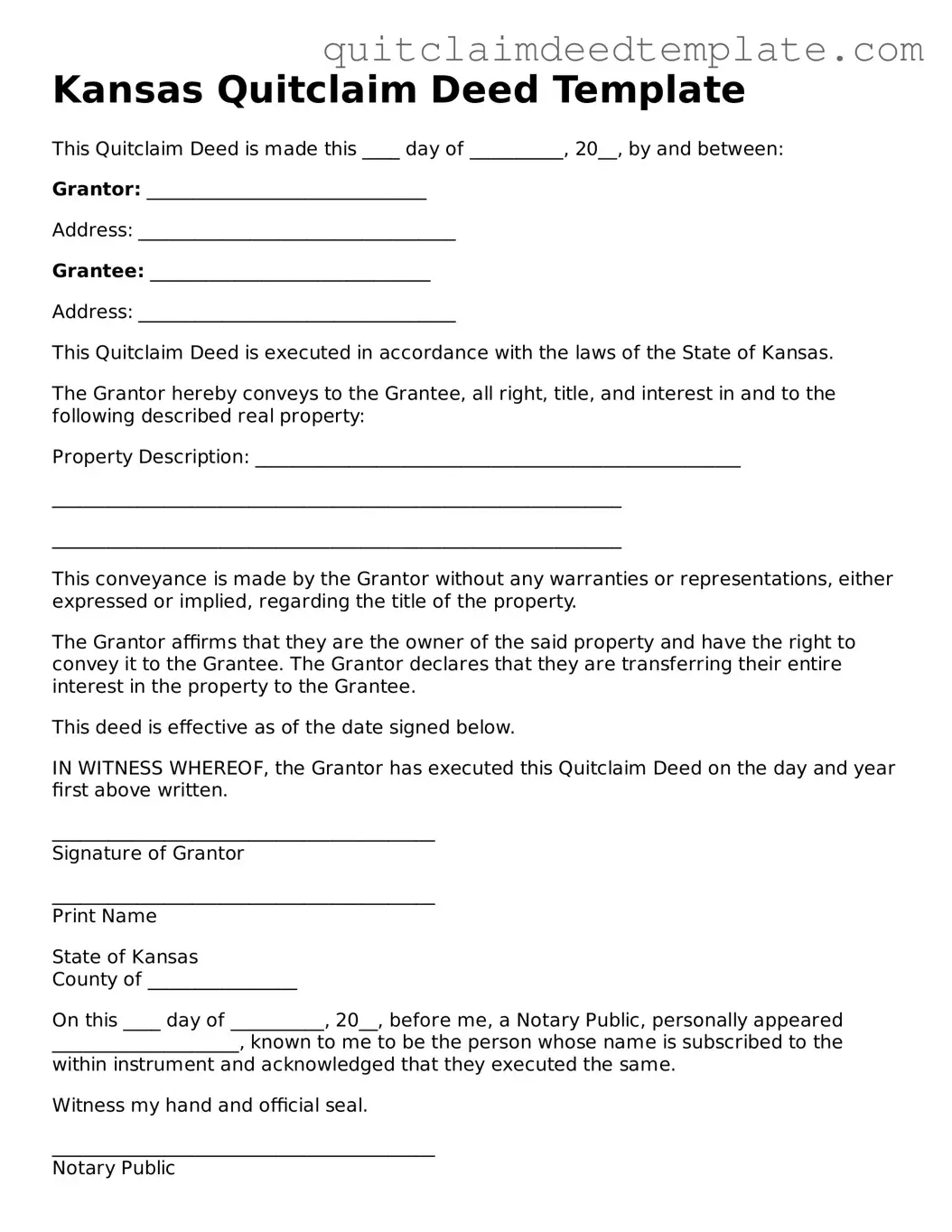Documents used along the form
In the process of transferring property ownership in Kansas, various forms and documents may accompany the Quitclaim Deed. Each of these documents serves a specific purpose, ensuring that the transaction is clear, legally binding, and properly recorded. Below is a list of some common forms and documents that may be used alongside a Quitclaim Deed.
- Property Transfer Tax Declaration: This document is often required to report the transfer of property and calculate any applicable transfer taxes. It provides information about the property’s sale price and its assessed value.
- Affidavit of Title: This sworn statement by the seller confirms their ownership of the property and outlines any liens or encumbrances. It helps assure the buyer that the title is clear.
- Title Insurance Policy: This insurance protects the buyer from potential disputes over property ownership. It covers any legal fees or claims that may arise from issues not identified during the title search.
- Property Survey: A survey provides a detailed map of the property boundaries. It can reveal any encroachments or easements that may affect ownership rights.
- Purchase Agreement: This contract outlines the terms of the sale between the buyer and seller. It includes details such as the purchase price, payment terms, and any contingencies.
- Notice of Intent to Convey: This document informs interested parties, such as creditors or co-owners, of the seller's intent to transfer property ownership. It helps prevent disputes later on.
- Power of Attorney: If the seller is unable to sign the Quitclaim Deed in person, a Power of Attorney allows another individual to act on their behalf, ensuring the transaction can proceed smoothly.
- Deed of Trust: This document secures a loan against the property. It outlines the terms of the loan and provides the lender with a claim to the property if the borrower defaults.
- Release of Lien: If there are existing liens on the property, this document shows that the lien has been satisfied or released, ensuring the buyer receives clear title.
Understanding these accompanying documents can help both buyers and sellers navigate the complexities of property transactions in Kansas. Each form plays a vital role in ensuring that the transfer of property is executed properly and that all parties are protected throughout the process.
